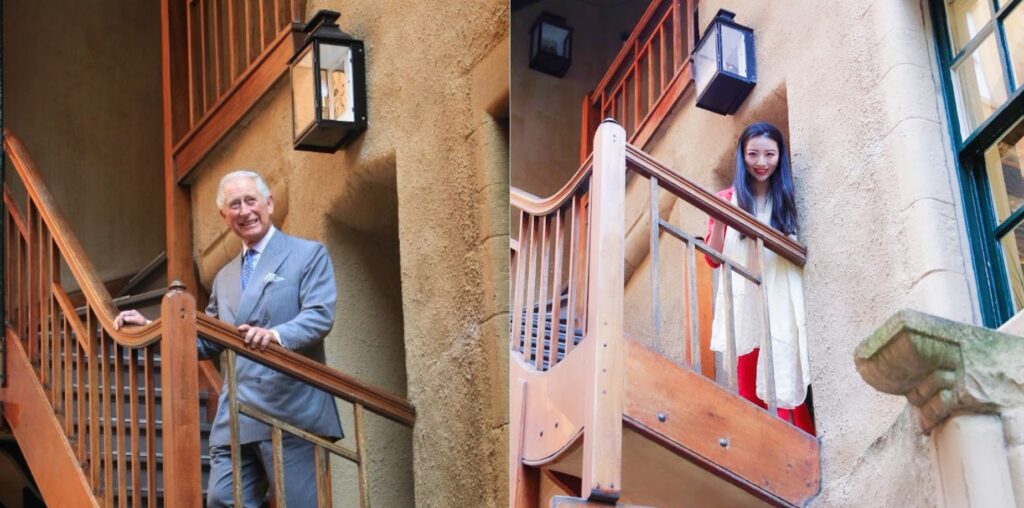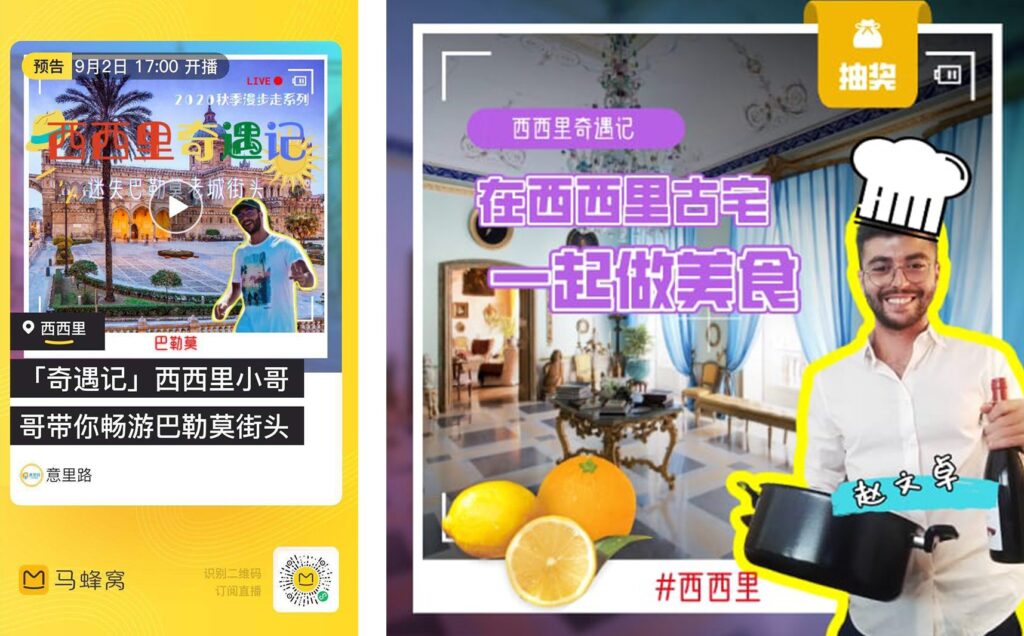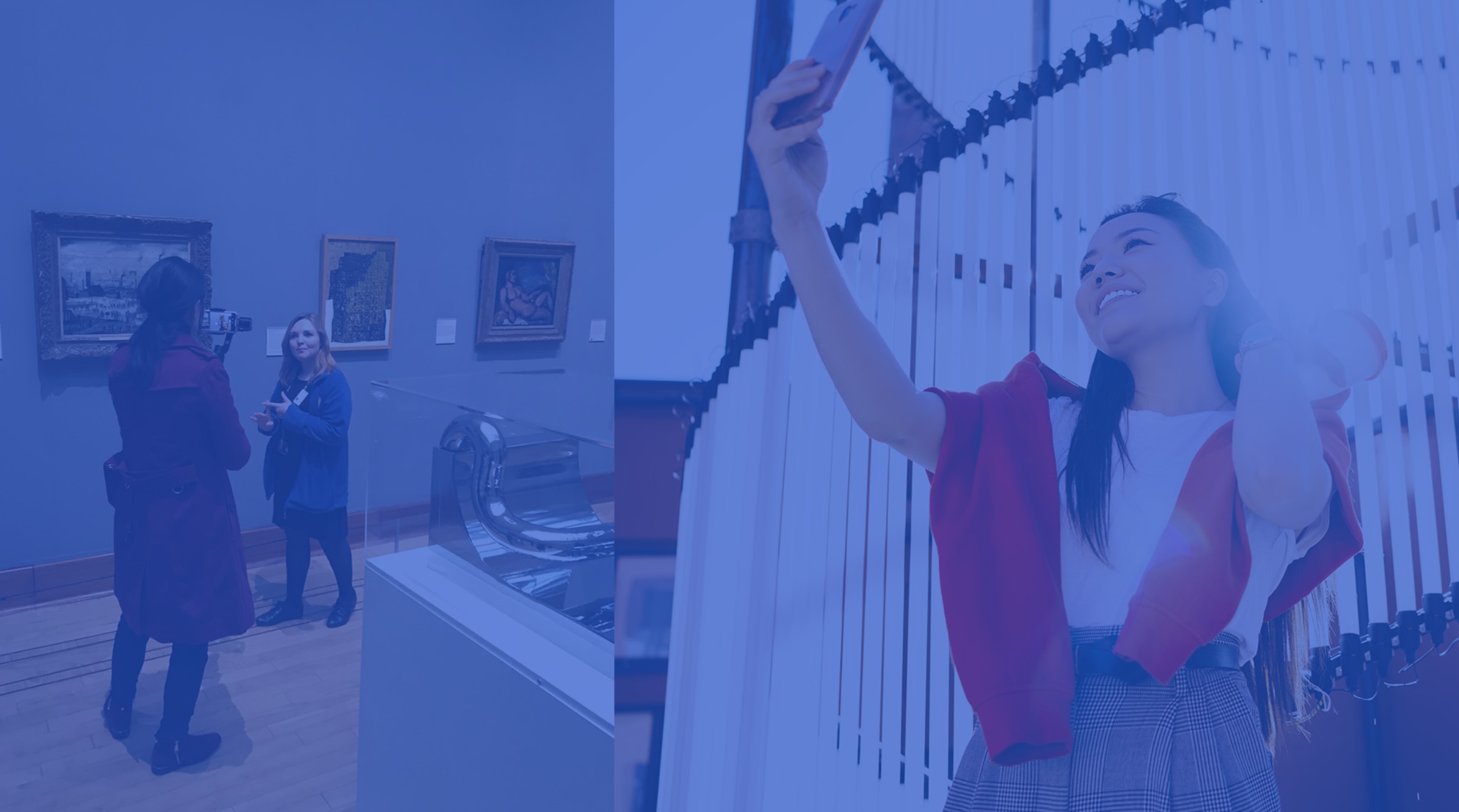From the Palace of Versailles to the British Museum, European cultural institutions have leaned into livestreaming to diversify their China engagement tools in 2020. Beyond livestreams planned and executed in-house, museums and attractions are also working alongside local livestreamers who specialize in delivering cultural experiences to mass audiences.
As part of Jing Culture & Commerce’s ongoing coverage of cultural livestreaming, we connected with livestreamers from the U.K., the Netherlands, and Italy to learn how they prepare and what best practices they employ when livestreaming to Chinese audiences.
Feixue Huangdu (UK)
Armed with a master’s degree in Museum and Heritage Development from Nottingham Trent University, Huangdu specializes in introducing Chinese audiences to British culture through off-the-beaten-trail, often rural, cultural attractions. Her livestream of Ruddington Village Museum drew more than 300,000 virtual visitors and she has since livestreamed from stately homes, castles, and small museums across the U.K.

Photo provided by Feixue Huangdu
The key to a successful livestream is… preparation, I begin with a conversation with the curators, then we meet to discuss the route, the objects they want to focus on and anticipating questions that viewers might have.
I create connections with my audience by… choosing objects that have a link with China and telling the story behind it, this gives viewers a sense of familiarity.
The way I balance entertainment and information is… planning, I choose objects that are very representative of the institution, the entertainment part often comes from the viewers, from their feedback and comments and sometimes it’s best to follow what viewers are most interested in, I’d say it’s a balance of 80 percent preparation and 20 percent reacting to the audience.
An early mistake I made… I livestreamed from a museum where there were a lot of people, there was a lot of noise, and I mainly read labels. Viewers told me it was boring and they couldn’t see the objects clearly!
Yan Song (Netherlands)
Becoming a cultural influencer was not part of the plan. Having spent his college days roaming Shanghai’s museums, Song began blogging (on WeChat) about his cultural visits while enrolled at Delft University of Technology’s Department of Urbanism. Several hundred museums later, Song had cultivated a following and started guiding Chinese through some of the Netherlands’ most celebrated institutions, an experience that proved a natural segue to livestreaming. His most successful livestream to date has been at Mauritshuis in The Hague.

Yan Song (in the green coat) leads a museum tour in Mauritshuis. (Photo provided by Yan Song)
The way I think about preparation… three parts; tour content, technology testing, and promotion. I manage the tour content and organize the storyline, for the test, we visit the museum the day beforehand, and the promotion is mainly arranged by partner companies.
An early mistake I made… forgetting to check questions and responses from viewers, it’s important in livestreaming and now my favourite part of the experience, they bring new and unexpected perspectives to each artwork.
An improvement I quickly adopted… after introducing and discussing an artwork, I leave time for the viewers to digest, think, and ask questions.
Pro tips I’d recommend… avoid rooms where the WiFi signal is weak, invite colleagues to a pre-livestreaming session and practice asking and answering questions, and use jokes and funny interactions to smooth the transition while moving between artworks.
Giorgio Centineo (Italy)
Working as a Chinese marketing specialist in Sicily’s tourism industry, Centineo took his Mandarin skills and experience leading group tours online once international travel ground to a halt. Centineo has taken viewers to some of Sicily’s most iconic locations and, as he readily admits, it’s been a steep, but fun, learning curve.

Photo provided by Giorgio Centineo
My advice to first-time livestreamers… give a warm welcome to your viewers, speak slowly, and always pay attention to audience comments. Last, if your numbers are disappointing try changing the time of the broadcast, different times attract different types of audiences.
The content that works best… brings together food, culture, and monuments. The Chinese art food-oriented people! For vlogs and live streams, those focused on the theme of food gets the biggest following.
Something unusual I’ve tried in a livestream… when I was in Cefalù, in front of the view from the famous film “Cinema Paradiso”, I imagined the scenario where I asked a girl to marry me. It was fun.



